Ruisdael: Observer of the Nature

"Jacob van Ruisdael is often regarded as the single most important landscape painter of the Dutch Golden Age in the seventeenth century, the place and moment where landscape painting first came into its own".
This is a note of a special exhibition of Ruisdael in the art museum.
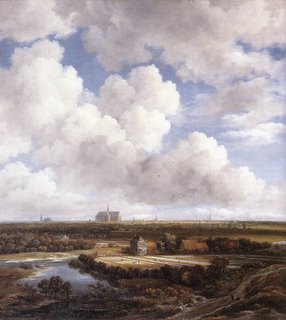
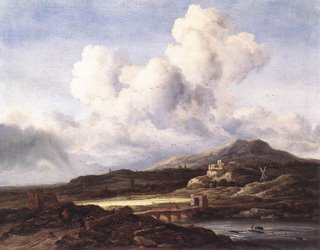
I am possessed by the immense skies in Ruisdael's paintings. Neitherland is a flat country, so that it is easy to see the sky everywhere. The sky often occupies two thirds of space in his frames. He observes attentively the change of the light, the color, and the moving of the clouds in the sky. It is tremendously inspiring and imaginative.
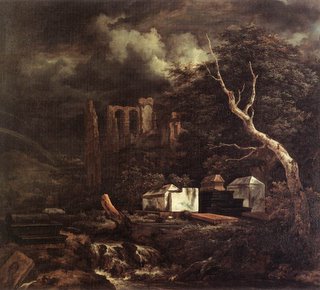
The tensions between fiction and truth, life and death are essential elements in his paintings, creating a kind of landscape rich in accurate observation and symbolism. This Jewish Cemetery, the most monumental of his imaginary scenes, transformed a humble graveyard into a symbol of the transience of life. Ruisdael might have some a prior perception of death. As an interesting detail, he carved his name on a tombstone in the left corner. In his many other works, dead trees and harvested crops are often aligned with alive comparatives.

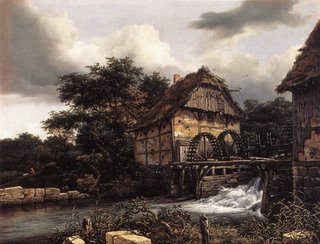
Ruisdael has a favor of mechanics. Windmills and watermills frequently appear in his paintings.
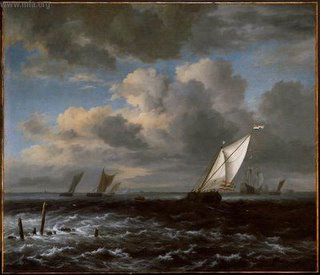
Choppy Ocean. Diagonal is Ruisdael's favorite compostion to create some interesting perspective.
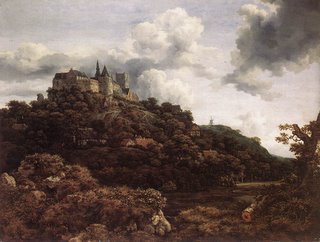
Details are important in Ruisdael's painting. He is adept to use red touch to lead the viewer's eyes. In his early works, there are often unnoticeable small touches of a rested traveler, an animal, or a distant windmill.
0 Comments:
Post a Comment
Subscribe to Post Comments [Atom]
<< Home